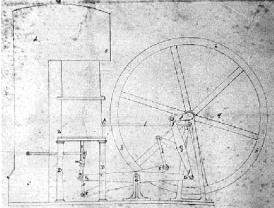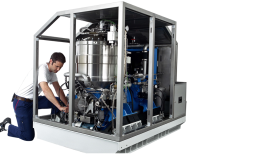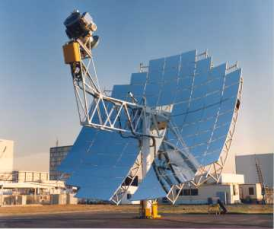Robert Stirling
1790 – 1878

Reverend Doctor Robert Stirling, part-time engineer and full-time minister, inventor of the Stirling engine
Engineering Achievements
Robert Stirling enjoyed a full career as a minister in the Church of Scotland. But engineering was also in his blood. His grandfather, Michael Stirling invented a threshing machine. Robert himself studied practical mechanics as a boy. He had five sons, four of whom became innovative locomotive and railway engineers in Britain and South America, and the other entered the church.
It was engineering that would secure his reputation. In 1816, at the age of 26, and shortly after his ordination as a minister, he patented an engine which produced motive power from heated air. He continued to refine his ideas and, with his brother James, registered patents for improvements in 1827 and 1840. The principles of his revolutionary engine are increasingly being adopted and adapted as conventional fuels for internal combustion engines become scarcer.
His Life
-
1790 Born in Methven, Perthshire, Scotland on 25th October
-
1805 Age: 15 Matriculated at Edinburgh University
-
1815 Age: 25 Licensed to preach by presbytery of Dumbarton
-
1816 Age: 25 Presented by Duke and Duchess of Portland to second charge at Laigh Kirk, Kilmarnock
-
1816 Age: 25 Ordained in September
-
1816 Age: 26 Patented an engine which produced motive power from heated air
-
1819 Age: 28 Married Jane Rankine on 10th July
-
1824 Age: 33 Admitted to Parish of Galston, Ayrshire
-
1827 Age: 36 Patented an improved hot-air engine with his civil engineer brother James
-
1840 Age: 49 Awarded honorary degree of DD from St Andrews University
-
1840 Age: 50 Patented a further improved hot-air engine with his civil engineer brother James
-
1878 Age: 87 Died at Galston manse on 6th June, buried in Galston churchyard on 10th June
His Legacy
None of Stirling's experimental work or papers survived except for two model engines built by him when he was a Minister at Kilmarnock. At Edinburgh university Stirling's engine was used in student classes and it is now on display in the Royal Scottish Museum. At Glasgow university the engine lay forgotten until discovered in 1847 by William Thomson, who later became Lord Kelvin. Thomson used the model in lectures to show that Stirling's machine worked on a reversible cycle.
Today's applications include heat pumps; the NASA MOD I and II automotive engines; various hybrid electric vehicles; Swedish shipbuilder Kockums has built 8 Stirling powered submarines; biomass engines for developing countries; fans for wood-burning stoves; WhisperGen of New Zealand has developed an "AC Micro Combined Heat and Power" Stirling cycle engine; and Stirling engines are being used to convert solar energy to electricity with an efficiency better than non-concentrated photovoltaic cells;. - and many many more.
As conventional fuels become ever scarcer, the Scottish clergyman's ideas from almost 200 years ago are of more relevance today than ever.
More Information
Robert Stirling: preacher and inventor. D.W. Loveridge. Transactions, The Newcomen Society, 50, 1978-79.
Dr Stirling and his engine. J.M.A. Lenihan and J.R. McKay. College Courant: Glasgow University Graduates Ass. 1974.
Robert Stirling's Models of the "Air Engine". James G Rizzo. 2009.
Stirling and Hot Air Engine website Robert Sier. accessed 24 Dec 2014.
There is a portrait of Robert Stirling in the National Portrait Gallery. Oxford Dictionary of National Biography entry (full text available to subscribers and UK library members)
-

Reverend Doctor Robert Stirling
-

From Stirling's Original Patent, 1816
-

Kockums Stirling Engine module. Picture by courtesy of Saab Kockums
-

Phillips MP1002CA Stirling engine, 1951 at Kerkrade, Industrion
-

Solar power application by Saab Kockums. Picture by courtesy of Saab Kockums.

